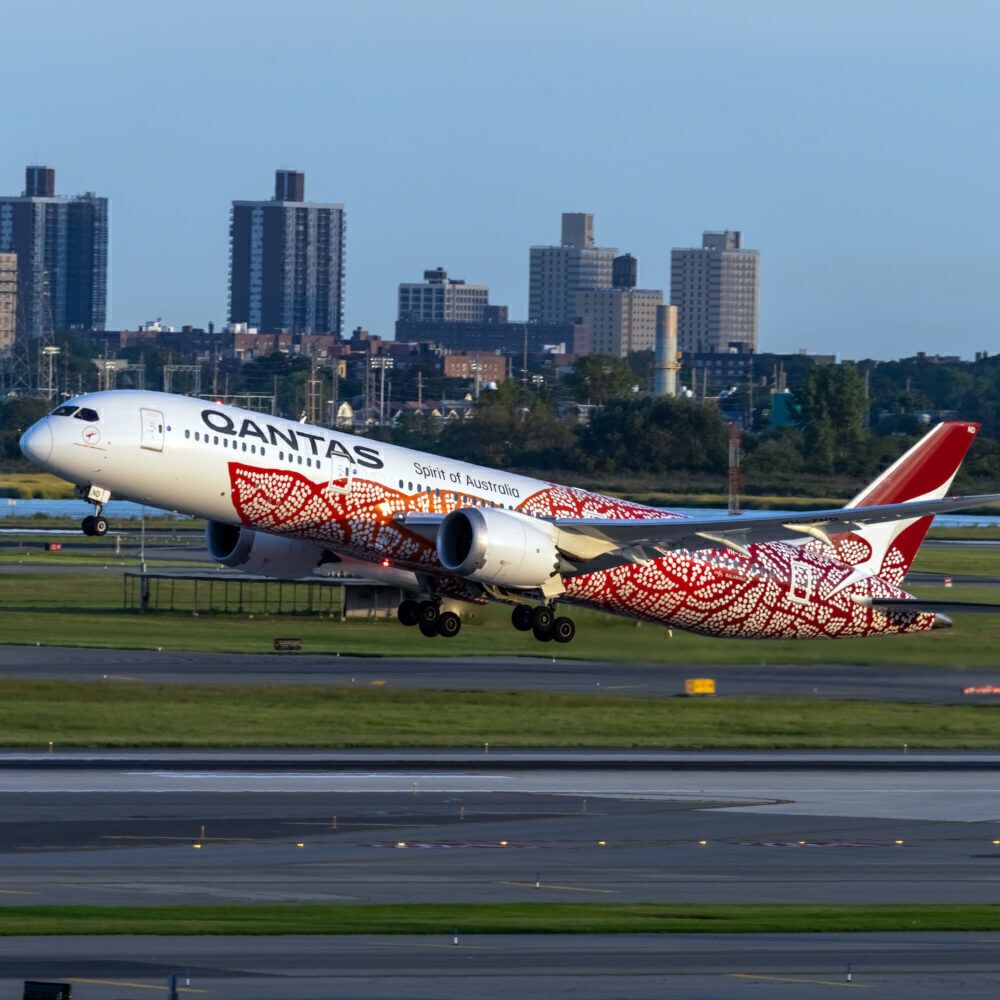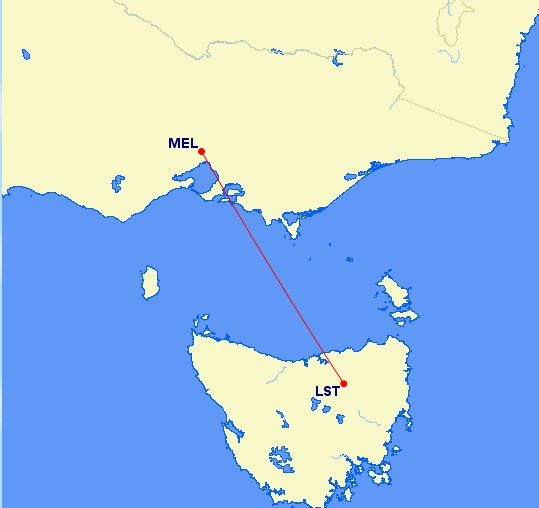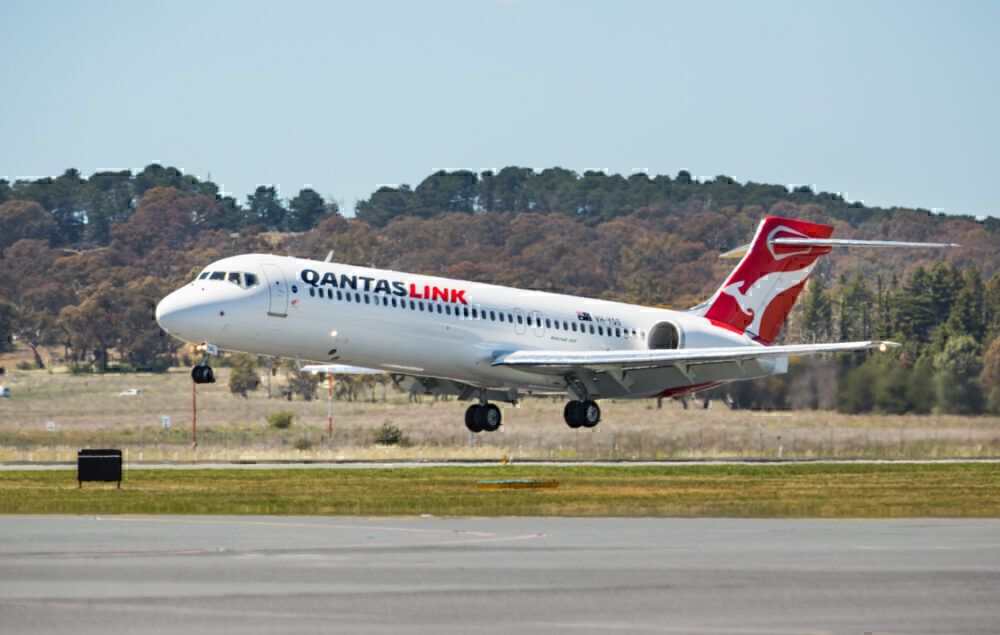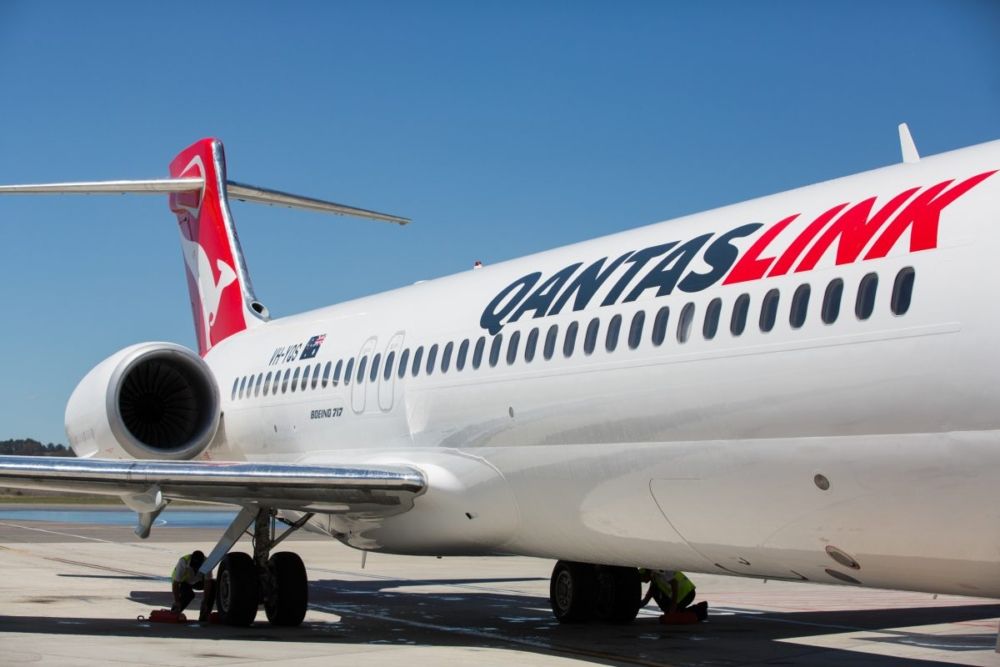On May 29th, 19 years ago, a Qantas flight operating from Melbourne to Launceston, Tasmania, was subjected to an attempted hijacking. Thankfully the brave actions of several passengers and crew members potentially saved the lives of all onboard and the aircraft itself. This is the story behind that eventful day and the heroics of those involved.
History of flight 1737
Qantas Flight 1737 was a routine flight operated by a Boeing 717-200 aircraft registered VH-NXN. The flight was operated by National Jet Systems operating as Qantaslink on behalf of Qantas. Flight 1737 took off from Melbourne Airport at 1450 on May 29th, 2003. The flight carried 47 passengers and six crew.
Approximately 10 minutes after take-off, as the crew prepared for the onboard meal service and the seat belt sign was turned off, a passenger seated in row seven (later named by police as David Robinson) became noticeably distressed and agitated. He subsequently stood up and began to make his way up the aisle to the front of the cabin, heading directly towards the door to the flight deck.
As he advanced along the aisle, Robinson produced a pair of 15-centimeter sharpened wooden stakes taped together from his jacket pocket. Without provocation, Robinson stabbed flight attendant Denise Hickson and flight purser Greg Khan in the head as he advanced towards the forward cabin galley.
Despite having sustained severe injuries, and notwithstanding repeated blows to the back of his head from Robinson using the wooden stakes, Khan tackled Robinson and brought him down in the galley area.
Upon witnessing the struggle at the front of the cabin, several passengers (including a Canadian paramedic, Derek Finlay, a former Canadian soldier) managed to restrain Robinson by holding him down and tying him up with restraining material held onboard the aircraft. Up to five passengers were involved in the restraining process, according to local police reports.
Robinson was detained in a space behind two seats after being restrained while the aircraft returned to Melbourne Airport to make an emergency landing at 15:25. Upon landing, the two cabin crew members (Khan and Hickson) were taken to a local hospital for treatment. At the same time, a passenger who received minor lacerations was treated at the airport by paramedics.
Security issues highlighted
Despite numerous security improvements following the terrorist attacks on the World Trade Center in September 2001, it was found in the subsequent inquiry into the incident that Qantas flight 1737 lacked certain security arrangements.
The door to the flight deck had not yet been adapted to completely block access from the outside as required following the 2001 attacks. Had Robinson made it to the flight deck, then significant loss of life was said to have been highly likely.
Qantas came in for criticism following the incident and subsequently undertook a full security review of its operations. The carrier guaranteed that flight deck doors would be secured on all aircraft by November 1st, 2003.
However, the airline dismissed the suggestion of having armed sky marshals on every flight due to the costs involved. Also, it refused to carry out full body searches on every passenger to detect wooden objects, stating that adopting such procedures would be unfeasible.
Conviction
In a subsequent police interview, Robinson admitted attempting to hijack the plane, which he intended to crash into the Walls of Jerusalem National Park in Tasmania. He also admitted an intention to hijack aircraft on two previous occasions. Senior security sources revealed that Robinson had recently been sacked from his job and planned to break into the cockpit and set it on fire.
In July 2004, a jury sitting at the Supreme Court in Victoria found Robinson not guilty of the three charges against him (attempted hijack of an aircraft, attempted murder, and grievous bodily harm) due to reasons of mental impairment.
Three psychiatrists testified that at the time of the incident, Robinson was diagnosed as suffering from severe paranoid schizophrenia and was detained to undergo psychiatric treatment.
Upon further investigations by the airline, it was found one of the cabin crew used the international code for hijacking over the interphone to the flight deck (7500). The crew member states she got a reply. However, the flight deck crew never heard the message and only found out later that an attempted hijacking had occurred and crew members had been injured.
The flight deck crew stated they both heard yelling and screaming coming from the passenger cabin and attempted to call the cabin crew. Having received no answer, they decided at this point to declare a pan-pan call to air traffic control (a pan-pan call is one call below the urgency of a Mayday) and to return to Melbourne.
Qantas made a training video following the incident based on the events that unfolded on flight 1737. The crew involved were interviewed, and this video is shown during Qantas security training sessions.
Following the incident, all Boeing 717 aircraft operated on behalf of Qantas were fitted with cameras, and the flight deck doors were strengthened in line with international recommendations.
Flight attendants Greg Khan and Denise Hickson returned to work after the incident. Khan and four of the passengers who helped restrain his attacker were awarded the Commendation for Brave Conduct by the then-Governor of Victoria, John Landy, in 2004.
Qantas offered all passengers and crew counseling as a result of what they had experienced and witnessed on flight 1737.
Some 19 years after flight 1737, the aircraft involved (VH-NXN) continues to fly on Qantaslink services. According to Flightradar24, just this week, the aircraft has operated for Qantaslink from its Melbourne base on flights to Hobart, Sunshine Coast, Newcastle, Brisbane, and Rockhampton.
However, the lifetime of the Boeing 717-200, which has proved to be a valuable workhorse of the Qantas short-haul fleet, is coming to an end. The airline recently announced the replacement of its Boeing 717 fleet with Airbus A220-300s, with the first of the new planes expected to arrive with the airline in late-2023.
Do you recall the events on Qantas flight 1737, or perhaps you have flown on the aircraft involved? Let us know in the comments.

_(8149874983).jpg)



.jpg)
